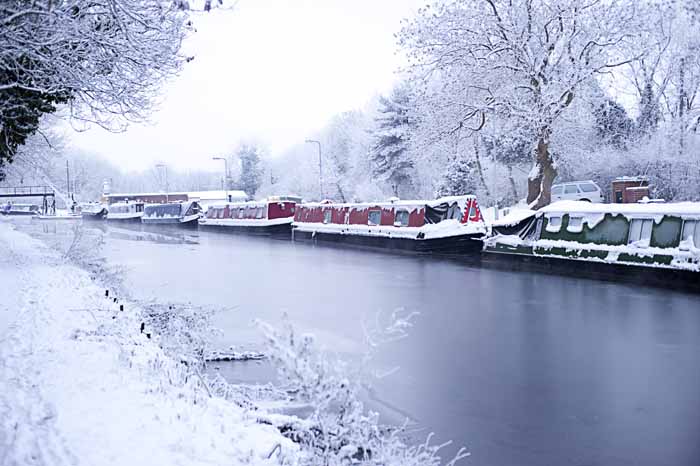How to Live on Your Narrowboat Over The Winter Time
People who are new to boating often ask whether it’s possible to
live on a narrowboat over the Winter; the answer is Yes it is possible, it’s
just a case of being prepared for the colder weather in the winter months.

Having good housekeeping in place will enable you to enjoy living
comfortably on your boat even in the coldest and wettest weather.
Being prepared for the winter winds, rain, snow and
ice will make living on your boat do-able and you shouldn’t run into any issues.
If you plan to keep cruising over the Winter you will need
to check for stoppages as this may affect your journey. 'Stoppages' are when the Canal and River Trust close or restrict parts of the canal systems to carry out maintenance work, this usually happens in the winter when the canals are quieter. Stoppages can be found
on the CRT website and you'll be able to search for
stoppages on their site using the interactive map.
A frozen canal will cause a problem if you want to cruise. However it will not affect your day to day living IF you are prepared! Our
advice to you if you find yourself in frozen water is to NOT try and break the
ice by driving the boat through it, especially if it is over half an inch
thick. If you insist on doing this you will be putting your engine under a huge
strain and it may also cause damage to your hull, as the ice pieces can scrape
the blacking away. You need also to consider other boaters; if you are
crashing through thick ice these slabs of ice are going to be hitting the other boats
around you causing damage. This is not something other boat owners will appreciate! So
unless there is an emergency, be patient, sit tight until the water starts to
thaw.
Warning - If the canal freezes and has two or more inches of
ice, then no matter how much you try to move, you aren’t going anywhere until the
temperature rises and the ice releases you!
If the canal allows it, and you are cruising, remember to wrap
up and keep warm. Take turns at the helm, sharing this task will ensure no one
ends up with hypothermia. A steady supply of warm drinks will help keep you
going when it’s your turn to cruise the boat.
As tempting as it may be, please do not let any of your party
walk on the frozen canal, this is very dangerous and should be left to the
swans and ducks!
Top Tips
Follow these simple steps whether you are cruising or
mooring to ensure the boat will run efficiently over the winter;
- Emergency food should be stocked up just in case the canal
claims you for a few days or weeks!
- Ensure the fuel tank is filled up.
- Make sure you have
about 30% of anti-freeze in your water and heating system
- Stock up the solid fuel for your stove,
Insulate your pipes to prevent damage
- Check the batteries are in good working order
- Make sure the boat is well ventilated to reduce the chance
of condensation arising.
- Protect the hull by hanging planks of wood alongside the
boat to prevent ice slabs bumping into your hull when you are mooring.
- If you use a pump out toilet, it is worth carrying a cassette
toilet to use in case you get stuck for a long period of time and you are
unable to empty your usual facility.
Outside Advice
It goes without saying that icy surfaces are potentially
lethal, so extra care needs to be taken when you are outside. Take extra care
getting on and off your boat and when walking on the towpath and using the
locks.
Dress for the weather; if you are warm and dry then carrying out
jobs like operating the lock, tying up the boat, and other outdoor tasks are much
more comfortable and you stand less chance of catching a cold.
If you are using the water pipes on the towpath or at a
marina make sure you completely turn off the tap and also take care not to
spill any water which will create an icy puddle.
For those of you who intend to leave your boat unattended over the
winter then read our blog about winterising your narrow boat.